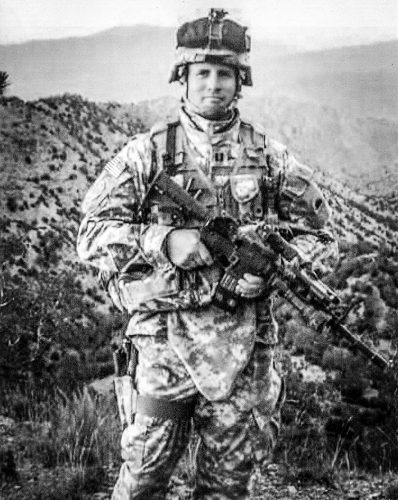
A Eugene Police Department officer yells, “Drop it.”
Milliseconds later you can hear a gunshot, leading to the death of veteran Brian Babb.
Babb was killed by EPD in March 2015. A $7.5 million lawsuit filed by Babb’s family against the city and three of its police officers had opening statements on a motion for summary judgment in U.S. District Court on Friday, Jan. 18. The courtroom was filled with Babb’s family and friends.
When defense lawyers presented video and audio evidence, most of the courtroom’s audience shied away from viewing the content that reminded them of Babb’s death.
Legal staff for the city of Eugene and EPD officers say the lethal force was justified because Babb had previously fired a shot inside his house and because Babb later walked to the front porch wielding a rifle.
However, in opening statements in McGowan et al v. Stutesman et al, Carlton Odim, a Chicago-based lawyer with Action Injury Law Group representing the Babb family, aired doubts in the defendants’ claims. Babb’s sister Ronda McGowan originally filed the case as a representative of Babb’s estate.
In short, Odim calls into question whether EPD’s three officers, including Officer Will Stutesman who fired the shot, were covering their tracks over what Odim called “a bad shot.”
Odim added that these EPD officers were conscious of the “bad shot” and were covering up a mistake. He asked why the gun was not in Babb’s right hand. Instead, the weapon was found six and a half feet away from Babb’s right hand.
This evidence contradicts statements made by EPD officers reporting, “Man down, gun in right hand.”
The rifle’s distance from Babb’s body left his family wondering whether the rifle was planted. The logic behind the assertion is that an EPD officer was located at the back fence of Babb’s home. The officer, according to their allegations, jumped the fence, went to Babb’s gun safe and planted the weapon beside Babb in between the gap of video footage provided by the armored Bearcat vehicle the police rolled up to Babb’s house in.
Defense lawyers provided audio recordings of EPD’s response and footage from the Bearcat. From the Bearcat footage (which didn’t have any audio), the viewer can see the door open and close. However, Babb could not be seen.
Babb’s legs, rifle and front porch aren’t viewable until six minutes and 12 seconds after Babb was shot, when the Bearcat made its way to the front porch — bulldozing over two layers of a wooden fence.
Because the Bearcat footage doesn’t show Babb at the moment of the shooting, it doesn’t show whether Babb pointed a rifle at an EPD officer.
However, earlier in the statements, defense lawyers said that because Babb had fired a weapon earlier, the law would justify shooting an armed person.
The city’s lawyers insisted there was no conspiracy to plant a rifle on Babb and that it didn’t “walk” next to Babb’s body.
They added that Babb’s neighbor also saw a rifle.
“We saw a shoulder strap — or something — we don’t know,” says Judge Thomas M. Coffin, reading the neighbor’s testimony. Coffin says he wants this case to accelerate.
However, Stephanie Babb, Brian’s brother, says that neighbor would have had to see through a fence, tree and the Bearcat vehicle.
The judge permitted the family’s request to re-examine some of the photos of Babb after the shooting from Stutesman’s camera. Robert Franz, representing the city, had submitted seven photos taken on Stutesman’s camera. Franz had said that the photos were conducive to his case.
As a result, the family’s attorneys requested rediscovery of all 50 photos on Stutesman’s camera to provide necessary context, Babb says.
Andrew Stroth, managing director of Action Injury Law Group, tells Eugene Weekly that the next step is to go beyond summary judgment and have a trial on behalf of Babb.
“We believe the shooting of Brian was unconstitutional and the use of excessive force. It’s our belief that this case should be heard in front of a jury, and be decided by a jury,” he tells EW. “What happened to Brian was unacceptable. Brian was in crisis, having a mental health breakdown. Instead of defusing the situation, Eugene police took a military-style approach which resulted in the unjustified and unconstitutional shooting of Brian.”
Action Injury Law Group, a law firm that specializes in cases dealing with police shootings, is also representing the family of John Elifritz, according to Oregon Public Broadcasting. Police killed Elifritz in a Southeast Portland shelter on April 7.
Odim, who led the plaintiff’s opening statements, represented Eric Hill, a 17-year old boy who was shot twice in the back and killed by police officers in Zion, Illinois, in 2015.
This story has been updated.